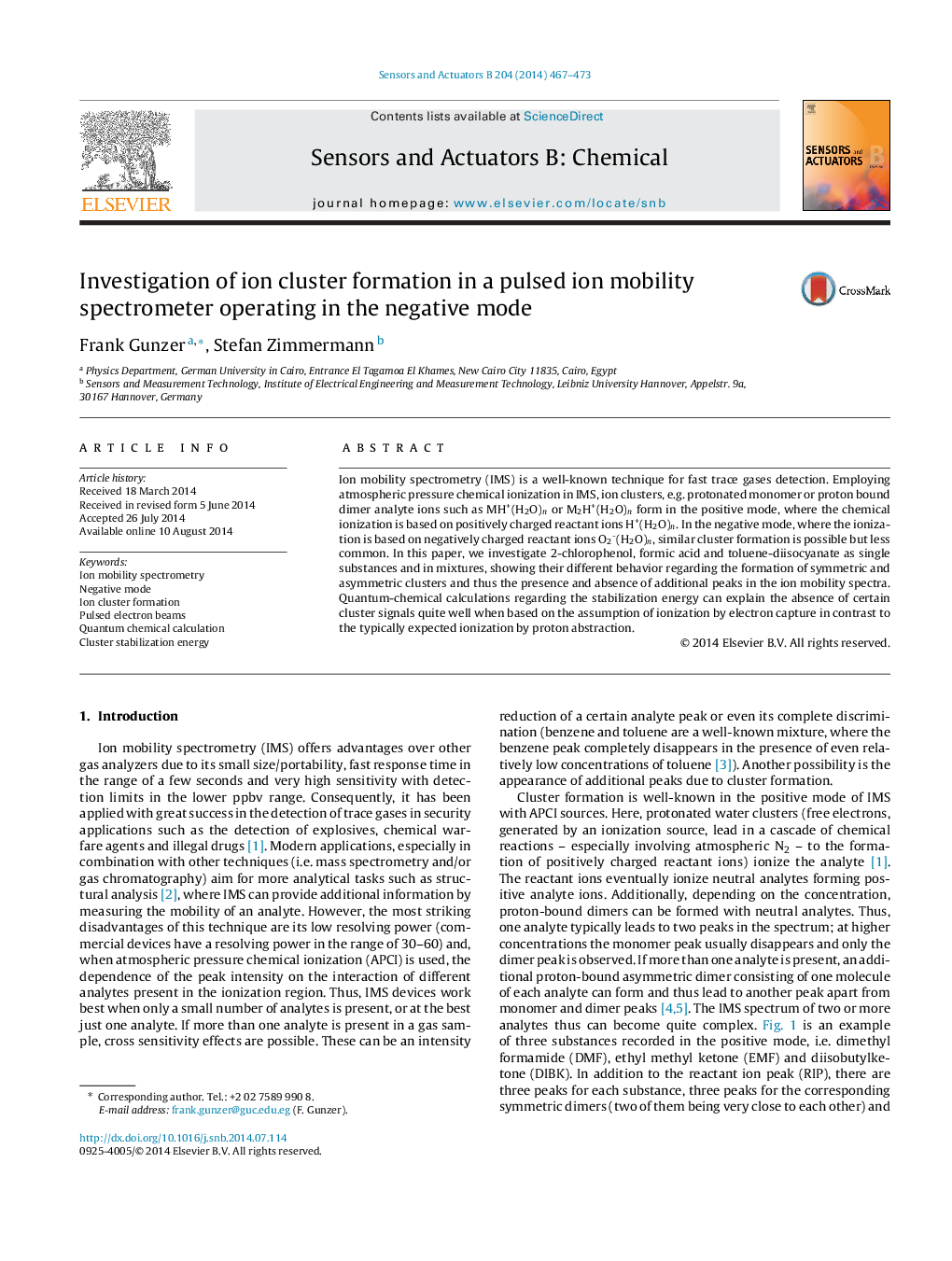| Article ID | Journal | Published Year | Pages | File Type |
|---|---|---|---|---|
| 742002 | Sensors and Actuators B: Chemical | 2014 | 7 Pages |
•In negative mode ion mobility spectrometry, mixtures of analytes lead in certain cases to the presence of additional peaks.•Quantum chemical calculations assuming ionization by charge capture can explain absence of certain cluster peaks well.•Low humidity levels seem to change ionization behavior from proton abstraction to charge capture in negative mode.•Thus it is possible to control number of peaks obtained in certain negative mode IMS spectra via humidity levels.•Improved identification potential.
Ion mobility spectrometry (IMS) is a well-known technique for fast trace gases detection. Employing atmospheric pressure chemical ionization in IMS, ion clusters, e.g. protonated monomer or proton bound dimer analyte ions such as MH+(H2O)n or M2H+(H2O)n form in the positive mode, where the chemical ionization is based on positively charged reactant ions H+(H2O)n. In the negative mode, where the ionization is based on negatively charged reactant ions O2-(H2O)n, similar cluster formation is possible but less common. In this paper, we investigate 2-chlorophenol, formic acid and toluene-diisocyanate as single substances and in mixtures, showing their different behavior regarding the formation of symmetric and asymmetric clusters and thus the presence and absence of additional peaks in the ion mobility spectra. Quantum-chemical calculations regarding the stabilization energy can explain the absence of certain cluster signals quite well when based on the assumption of ionization by electron capture in contrast to the typically expected ionization by proton abstraction.
